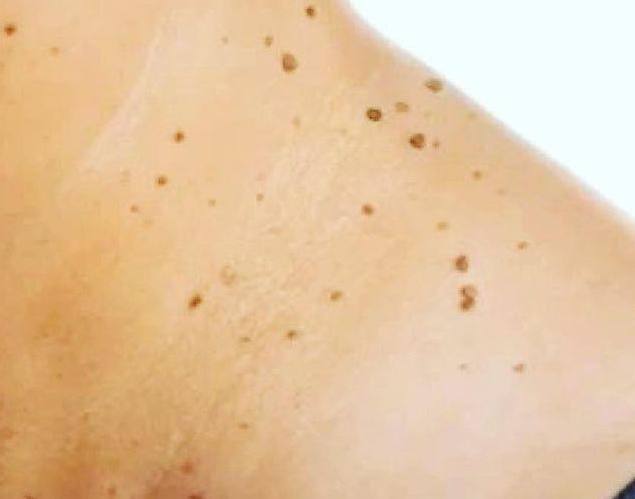There are various types of papillomas, which are benign growths or tumors caused by the human papillomavirus (HPV). These growths can appear in different locations, depending on the specific type of HPV involved. Here’s a rundown of some common types and their usual locations:
- Common Warts: These are rough, round growths that can appear on the hands, fingers, knees, and elbows.
- Flat Warts: As the name suggests, these are flat-topped warts that often appear on the face, arms, or legs.
- Plantar Warts: These warts are found on the soles of the feet and can be quite painful when walking.
- Genital Warts: These are warts that occur on or around the genitals, anus, or mouth. They are caused by low-risk HPV types 6 and 11.
- Oral Papillomas: These are warts that can grow inside the mouth, on the lips, or on the tongue. They are less common and can be caused by various types of HPV.
- Laryngeal Papillomas: These are warts that can grow in the larynx (voice box), causing hoarseness or other voice changes. They are caused by HPV types 6 and 11.
- Intraductal papilloma: A benign (noncancerous) growth within the milk ducts of the breast. It is characterized by the development of wart-like tumors that grow inside the ducts, often near the nipple.
It’s important to note that while most types of HPV do not cause cancer, some high-risk types (like HPV 16 and 18) can lead to certain types of cancer, including cervical cancer, anal cancer, and some types of head and neck cancers.
Home remedies
While it’s essential to consult a healthcare professional for a proper diagnosis and treatment, here are some home remedies that have been suggested:
- Apple Cider Vinegar: Mix 2-parts apple cider vinegar with 1-part water. Soak a cotton ball in this mixture, place it on the wart, and cover it with a bandage. Leave it on for three to four hours. Always remember to dilute the vinegar to prevent skin irritation.
- Garlic Extract: Garlic extract has been shown to have antiviral properties. Apply garlic extract directly to warts and cover with a bandage. It’s recommended to do this at night to allow the garlic extract to work while you sleep.
- Tea Tree Oil: Mix 2-3 drops of tea tree oil with a carrier oil like almond or coconut oil. Apply this mixture to the affected area and cover it with a bandage.
- Castor Oil: Castor oil has antimicrobial and anti-inflammatory properties. Apply a small amount to the papilloma and cover it with a bandage.
- Vitamin C: Crush a vitamin C tablet and mix it with water to create a paste. Apply this paste to the wart, cover it with a bandage, and leave it overnight.
- Echinacea: Echinacea is known for its immune-boosting properties. You can make a tincture or tea from echinacea and drink it regularly to help your body fight off the infection.
- Oregano Oil: Oregano oil is rich in antioxidants and has antiviral properties. Dilute the oil with a carrier oil and apply it to the affected area.
Remember to always conduct a patch test before applying any new substance to your skin to ensure you are not allergic or sensitive to it. If the home remedies do not provide relief or if the condition worsens, it is crucial to consult a healthcare professional for further evaluation and treatment.
Home methods of removing papillomas on the body
— Barbara Oneill (@BarbaraOneillAU) May 11, 2024
⠀
🔻1 recipe:
1 tsp baking soda + 1.5 tsp castor oil.
Pour baking soda into a clean bowl. Add castor oil. Apply this paste to the skin papilloma for 30 minutes and then rinse it with warm water.
⠀
🔻2 recipe:
2-3 drops of tea tree… pic.twitter.com/8DfRsz2Nkt
